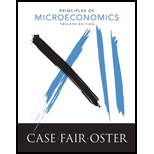
Concept explainers
(a)
Identify the selection bias in the study of heart disease and fast food.
(a)
Explanation of Solution
In the study of 5,000 office workers in Chicago, they considered only two variables such as heart diseases and fast food. But, in reality there were many reasons behind the heart diseases of a person. For example, lack of exercise, or a poor healthy life style and so on. With these reasons, there is also a possibility of regularly dine on fast food. Therefore, eating fast food thrice or many times per week is not only the reason for heart disease. Therefore, selection bias occurs in this study.
Selection bias: A selection bias occurs in a study, if the sample used in that study is not random.
(b)
Identify the selection bias in the study of senior assisted living facilities.
(b)
Explanation of Solution
A survey of senior-assisted living facilities states that majority of residents are females. Because, on an average, female tend to outlive men. But, this is not in the case of old men citizens. They do not need much assistance as older women. But, the notable fact that there are several older women in the population than older men. Therefore, selection bias occurs in this study.
Selection bias: A selection bias occurs in a study, if the sample used in that study is not random.
(c)
Identify the selection bias in the study of graduation from private and public universities.
(c)
Explanation of Solution
This study of college students' graduation from private and public universities states that an education from private university will enhance students' earnings. Those who have selected private university have more earning potential than those who have selected public universities. Therefore, private university is more selective. In other words, those students who have greater earning potential would likely select private universities.
Selection bias: A selection bias occurs in a study, if the sample used in that study is not random.
Want to see more full solutions like this?
Chapter 22 Solutions
Principles of Microeconomics (12th Edition)
- Answerarrow_forwardM” method Given the following model, solve by the method of “M”. (see image)arrow_forwardAs indicated in the attached image, U.S. earnings for high- and low-skill workers as measured by educational attainment began diverging in the 1980s. The remaining questions in this problem set use the model for the labor market developed in class to walk through potential explanations for this trend. 1. Assume that there are just two types of workers, low- and high-skill. As a result, there are two labor markets: supply and demand for low-skill workers and supply and demand for high-skill workers. Using two carefully drawn labor-market figures, show that an increase in the demand for high skill workers can explain an increase in the relative wage of high-skill workers. 2. Using the same assumptions as in the previous question, use two carefully drawn labor-market figures to show that an increase in the supply of low-skill workers can explain an increase in the relative wage of high-skill workers.arrow_forward
- Published in 1980, the book Free to Choose discusses how economists Milton Friedman and Rose Friedman proposed a one-sided view of the benefits of a voucher system. However, there are other economists who disagree about the potential effects of a voucher system.arrow_forwardThe following diagram illustrates the demand and marginal revenue curves facing a monopoly in an industry with no economies or diseconomies of scale. In the short and long run, MC = ATC. a. Calculate the values of profit, consumer surplus, and deadweight loss, and illustrate these on the graph. b. Repeat the calculations in part a, but now assume the monopoly is able to practice perfect price discrimination.arrow_forwardThe projects under the 'Build, Build, Build' program: how these projects improve connectivity and ease of doing business in the Philippines?arrow_forward
 Economics Today and Tomorrow, Student EditionEconomicsISBN:9780078747663Author:McGraw-HillPublisher:Glencoe/McGraw-Hill School Pub Co
Economics Today and Tomorrow, Student EditionEconomicsISBN:9780078747663Author:McGraw-HillPublisher:Glencoe/McGraw-Hill School Pub Co Economics (MindTap Course List)EconomicsISBN:9781337617383Author:Roger A. ArnoldPublisher:Cengage Learning
Economics (MindTap Course List)EconomicsISBN:9781337617383Author:Roger A. ArnoldPublisher:Cengage Learning
 Managerial Economics: A Problem Solving ApproachEconomicsISBN:9781337106665Author:Luke M. Froeb, Brian T. McCann, Michael R. Ward, Mike ShorPublisher:Cengage Learning
Managerial Economics: A Problem Solving ApproachEconomicsISBN:9781337106665Author:Luke M. Froeb, Brian T. McCann, Michael R. Ward, Mike ShorPublisher:Cengage Learning





